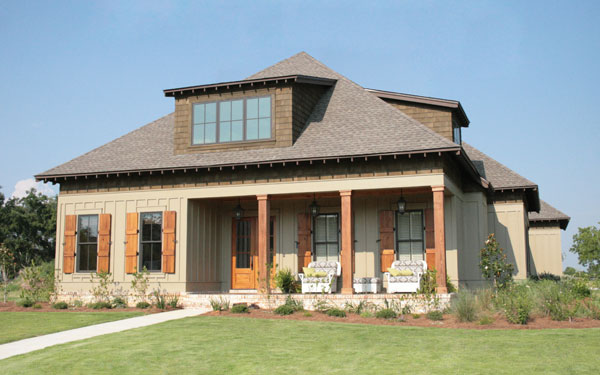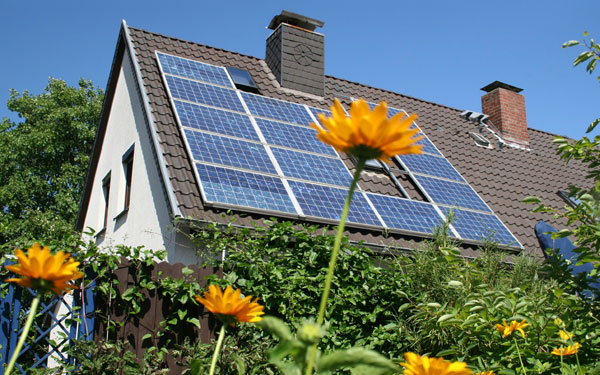by Jeremy Friedman
Everything is green these days. You can’t pick up a magazine or turn on the T.V. without finding out who has the newest green whatnot. Home building is no exception, and Green Building is sweeping the country. I am right in the middle of it. I get emails, read trade publications, go to trainings and conferences and I become so wrapped up in it that I expect everyone knows what I am talking about. I recently realized while talking with family and friends that most people had no clue what green building is. These were some people’s reactions.
Aren’t green homes weird looking?
Yes, I have seen some really crazy green homes, but most green homes are built in a traditional style, and you wouldn’t know by looking at them that they were green. I have seen beautiful, traditional homes that are certified green, and yes I have seen the shiny modern glass cubes with grass growing on the roof. I built a beautiful Fairhope Cottage style home with exposed rafter tails and cypress board and batten siding that will be Certified Green by the National Association of Home Builders (NAHB).
Green homes must have solar panels on them, right?
Solar energy is great and a lot of green homes incorporate them in their energy plans. Solar panels, however, are not a requirement when building a green home. There are a lot of certified green homes that do not utilize solar energy, and there are a lot of homes which are solar that are not green. Solar technology is getting much better and prices are continuing to drop, but I have found it is usually more cost effective to conserve energy than to generate it.
Aren’t green homes too expensive?
The problem with this way of thinking is that it doesn’t consider the operating cost of the home. Simply put, inefficient homes cost more to heat and cool, light, and supply water to. Green Homes may require more investment at the time of purchase or construction, but the return on that investment is immediate and permanent. Mortgage companies have figured this out. Mortgage companies will qualify a borrower for a larger mortgage payment with a product known as an Energy Efficient Mortgage (EEM). They know that if your mortgage payment is $100 extra each month and your utilities are $150 less then you will save $50 each and every month. As energy and water rates rise, the return on this investment will continue to get better.
O.K., now we know that a green home doesn’t have to be the expensive spaceship at the end of the block with grass on the roof and solar panels everywhere, so what makes a home green?

View This House Plan
See more Green House Plans
Green homes are energy efficient
Through careful design and construction green homes can reduce the amount of energy needed to operate by 30-75% and more. This is done by carefully air sealing the house, orienting the house for optimum solar exposure and shading, insulating, and choosing the right windows, lighting, HVAC, and appliances. A green home will have a Home Energy Rating (HERS rating). This rating is determined by testing, inspections, and analysis of a homes design and construction. Yes, I said testing. If someone claims that they have an energy efficient home ask them for the homes HERS rating.
Green homes conserve water
Green homes can reduce a home’s water use by 30-50% by using low flow faucets, shower heads, watersense toilets, and energy star appliances. This technology has greatly improved and there is no sacrifice of comfort in exchange for the water savings. We used dual flush toilets in our current project. These use less water for a “#1” flush than a “#2” flush. Other strategies for water conservation include rainwater catchment and greywater reuse, and I think that we will see more of this in the future.
Green homes are healthier
Green homes pay specific attention to indoor air quality. Recent data shows that the air inside buildings is often more polluted than the air outside, and people are spending more and more time indoors. This has exaggerated many problems including allergies and asthma. Green homes increase indoor air quality by eliminating possible pollutants such as formaldehyde, and other Volatile Organic Compounds (VOCs) during the construction process. Carefully designed ventilation also provides fresh air and also removes contaminated or moisture laden air.
Green homes use less resources
By using local, reclaimed, engineered and well designed products green homes have less impact on our natural resources including forests and energy supplies.
Green homes are certified
How do you know if a home really is green? It is hard to tell unless the home is certified by a third party. We are currently using the NAHB green building guidelines for our parade home, and are expecting it to receive a Gold level certification. Third party certifiers inspect and test homes during construction to verify that any claims are legitimate and quantified. A home buyer can be confident in the certification from a reputable organization such as the Washington D.C. based NAHB or the U.S. Green Building councils LEED certification.

Here are some related articles:
Save this article to:
back to top